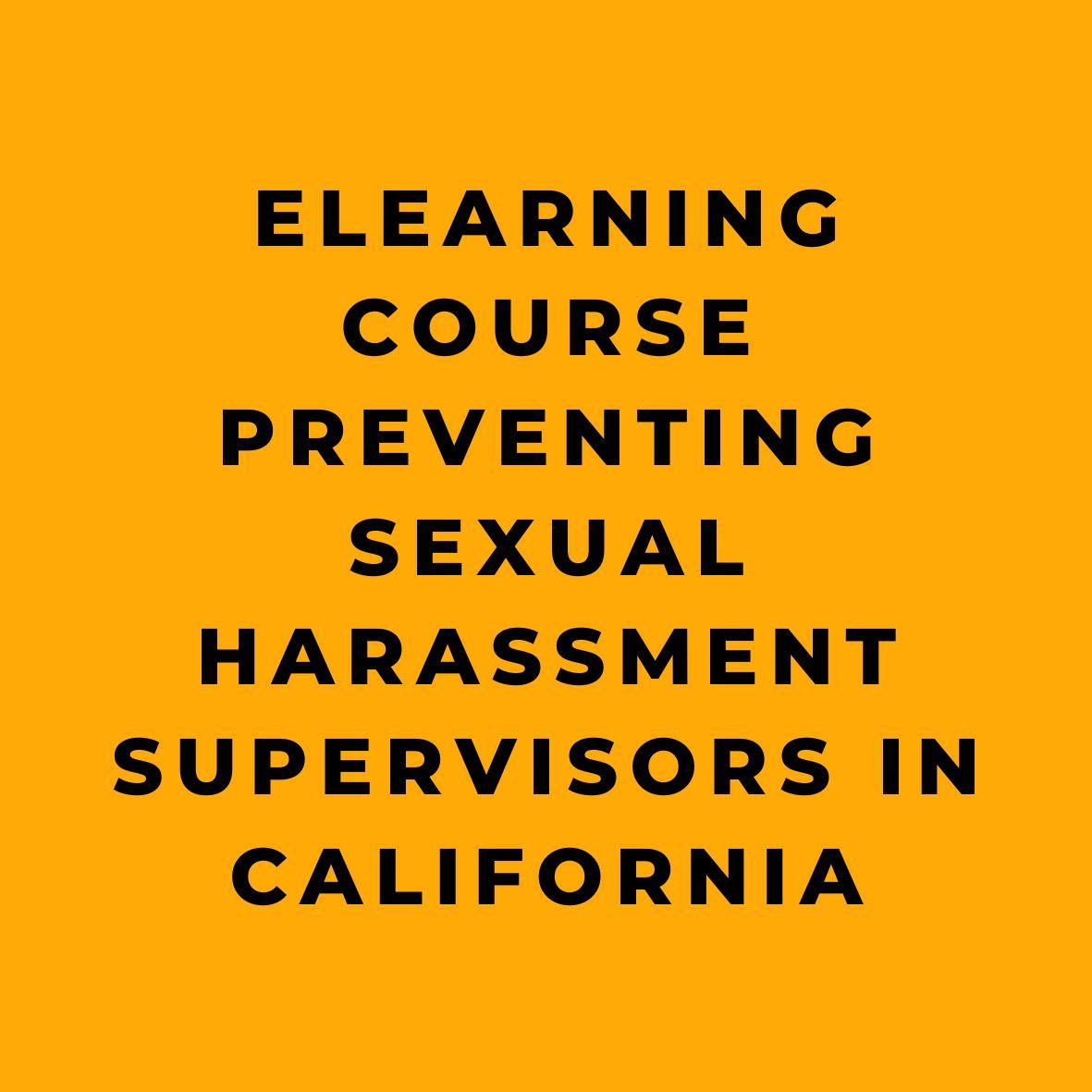I want to introduce you to our eLearning course for preventing sexual harassment for supervisors in California. This is a critical topic that every supervisor and manager needs to be aware of, especially if you’re working in facilities in the state of California. The state of California has specific regulations and requirements in place that you need to know about, and this course will cover those, as well as general information about sexual harassment and how to prevent it in your workplace.
Sexual harassment can have a devastating impact on victims, and it can also damage the companies they work for. That’s why it’s important for companies to take proactive steps to prevent it from occurring. As a manager or supervisor, you play a crucial role in preventing sexual harassment in your department, and this course will provide you with the information and tools you need to do just that.
In this course, we’ll cover three major sections: general information about sexual harassment and how to prevent it, sexual harassment regulations and requirements specific to California, and how to handle a sexual harassment investigation. You’ll learn about the different types of sexually harassing behavior, including unwelcome sexual advances, requests for sexual favors, and other verbal or physical conduct of a sexual nature that is unwanted or threatening.
You’ll also learn about the different ways that sexual harassment can manifest in the workplace, including talking about sex, making off-color jokes, commenting on a coworker’s physical appearance, displaying sexually suggestive pictures or objects, visiting pornographic websites, and using foul language or making obscene gestures. We’ll also discuss how victims of sexual harassment can be damaged emotionally, psychologically, and even physically by the abuse.
In addition to understanding what sexual harassment is and how it can manifest, you’ll also learn about your responsibilities as a manager or supervisor in preventing it from occurring in your department. You’ll learn about your company’s sexual harassment policy, and how you can enforce it to make sure that everyone in your department understands what types of behavior and language are unacceptable in the workplace.
You’ll also learn how to handle reports of sexual harassment in a professional and impartial manner, ensuring that all incidents are investigated thoroughly and that appropriate action is taken. This includes documenting everything and keeping good records, as well as ensuring that no employee faces any form of retaliation for reporting a potential sexual harassment incident.
We’ll also cover sexual harassment regulations and requirements specific to the state of California, including the Fair Employment and Housing Act, which defines sexual harassment broadly and prohibits discrimination against transgender individuals. We’ll also discuss how employers in California with 50 or more employees are required to train supervisors in sexual harassment prevention issues, and how this training must be repeated every two years.
At the end of this course, you’ll have a solid understanding of what sexual harassment is, how to prevent it in your department, and how to handle reports of sexual harassment in a professional and impartial manner. You’ll also be equipped with the knowledge and tools you need to ensure that your workplace is free from sexual harassment, creating a safer and more productive environment for all employees.
Remember, preventing sexual harassment is a top priority for all companies, and as a manager or supervisor, you play a critical role in achieving this goal. I hope you find this course informative and helpful, and I encourage you to ask questions and seek guidance from your HR department if you have any concerns or need further information.
As a manager or supervisor, it’s your responsibility to make sure your workplace is a safe and welcoming environment for all employees. Sexual harassment can have devastating effects on the victim, the company, and even the perpetrator. That’s why preventing it is a top priority for all companies, regardless of their size or industry. However, as laws and regulations continue to evolve, it can be challenging to keep up with the latest requirements and ensure your workplace is compliant. That’s where our courses come in. eLearning courses on preventing sexual harassment for supervisors and managers in California courses are specifically designed to help you navigate the updated regulations, including the rights of transgender individuals. By taking these courses, you’ll not only protect your employees and your company, but also show your commitment to creating a culture of respect and equality in the workplace.
Our interactive SCORM course and VOD/video streaming program provide comprehensive coverage of the updated California regulations, including the minimum 2-hour training requirement mandated by the State of California. But that’s not all – our courses cover a wide range of topics, including how sexual harassment affects employees and companies, what behavior is considered sexually harassing, and how to conduct an effective and ethical investigation of reported sexual harassment.
Our online courses are designed to keep employees engaged and involved in the learning process, with full-motion HD video filmed in real-life workplace settings and interactive quiz questions. Plus, our courses incorporate remediation training, so trainees can revisit course content they missed during the quiz, reducing training time and making our courses even more efficient and effective.
But sexual harassment training is just the tip of the iceberg – our libraries contain over 170 courses on important topics such as regulatory compliance, human resource topics, and general safety topics, including forklift/powered industrial truck safety, lock-out/tag-out, hazard communication, personal protective equipment, respiratory safety, confined space entry, and hearing safety.
Don’t let your workplace fall behind – choose our online courses for comprehensive and engaging employee training.










